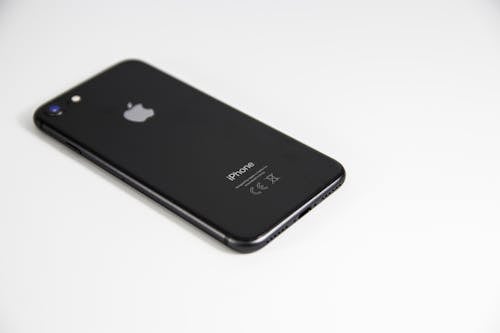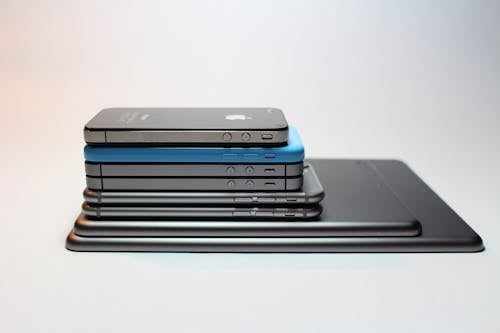
Introduction
The iPhone, introduced by Apple Inc. in 2007, has revolutionized the way we communicate, access information, and interact with the digital world. This article explores the history, evolution, and profound impact of the iPhone, examining how it has transformed technology and society over the past decade and a half.
The Birth of the iPhone
The story of the iPhone begins with Steve Jobs, the visionary co-founder of Apple, who unveiled the first-generation iPhone on January 9, 2007, at the Macworld Conference & Expo. Jobs described the device as three products in one: a widescreen iPod with touch controls, a revolutionary mobile phone, and a breakthrough internet communicator. This groundbreaking combination of features set the iPhone apart from any other device on the market.
The first iPhone featured a 3.5-inch display, a 2-megapixel camera, and up to 16GB of storage. It operated on iOS, Apple’s mobile operating system, which introduced a multi-touch interface that allowed users to interact with the device using gestures like tapping, swiping, and pinching. This intuitive interface made the iPhone accessible and easy to use, contributing to its rapid adoption.
The Evolution of iPhone Models
Since the release of the first iPhone, Apple has consistently improved and expanded its flagship product, introducing new models with enhanced features and capabilities. Each iteration of the iPhone has brought significant advancements in design, hardware, and software.
- iPhone 3G and 3GS: Introduced in 2008 and 2009, respectively, these models brought faster 3G connectivity and the App Store, which allowed third-party developers to create and distribute apps, vastly expanding the functionality of the iPhone.
- iPhone 4 and 4S: Launched in 2010 and 2011, these models featured a sleek new design with a glass front and back, a Retina display with higher resolution, and the introduction of the A4 and A5 chips for improved performance. The iPhone 4S also debuted Siri, Apple’s voice-activated virtual assistant.
- iPhone 5, 5C, and 5S: Released in 2012 and 2013, these models introduced a larger 4-inch display, a thinner and lighter design, and the A6 and A7 chips. The iPhone 5S also included Touch ID, a fingerprint recognition feature for enhanced security.
- iPhone 6, 6 Plus, 6S, and 6S Plus: These models, launched in 2014 and 2015, featured even larger screens (4.7 inches and 5.5 inches), a redesigned aluminum body, and the A8 and A9 chips. The 6S models introduced 3D Touch, which enabled pressure-sensitive interactions with the screen.
- iPhone 7 and 7 Plus: Released in 2016, these models removed the headphone jack, introduced water and dust resistance, and featured the A10 Fusion chip. The 7 Plus also included a dual-camera system for improved photography.
- iPhone 8, 8 Plus, and X: Launched in 2017, the iPhone 8 models featured wireless charging and the A11 Bionic chip. The iPhone X, released to commemorate the iPhone’s 10th anniversary, introduced a bezel-less design, an OLED Super Retina display, and Face ID facial recognition.
- iPhone XS, XS Max, and XR: Released in 2018, these models built on the design and features of the iPhone X, offering improved performance with the A12 Bionic chip and enhanced camera capabilities.
- iPhone 11, 11 Pro, and 11 Pro Max: Launched in 2019, these models featured the A13 Bionic chip, improved battery life, and a triple-camera system on the Pro models for advanced photography and videography.
- iPhone 12, 12 Mini, 12 Pro, and 12 Pro Max: Released in 2020, these models introduced 5G connectivity, a new flat-edge design, the A14 Bionic chip, and improvements in display and camera technology.
- iPhone 13, 13 Mini, 13 Pro, and 13 Pro Max: Launched in 2021, these models featured the A15 Bionic chip, longer battery life, and enhanced camera capabilities, including cinematic mode for video recording.
- iPhone 14 and Beyond: The iPhone 14 series, introduced in 2022, continued the trend of incremental improvements with advancements in processing power, camera technology, and battery efficiency. The focus on sustainability and environmental responsibility also became more prominent, with Apple emphasizing the use of recycled materials and renewable energy in production.
The Impact on Communication
The iPhone has fundamentally changed how people communicate. The integration of phone, email, and internet capabilities into a single device made communication more seamless and efficient. The introduction of iMessage and FaceTime enabled free, instant messaging and video calls over Wi-Fi and cellular networks, reducing the reliance on traditional SMS and voice calls.
The iPhone also popularized social media and instant messaging apps, such as Facebook, Twitter, WhatsApp, and Instagram, allowing users to stay connected with friends, family, and colleagues worldwide. These platforms have transformed personal and professional communication, enabling real-time updates, multimedia sharing, and global connectivity.
The Impact on the Economy
The iPhone has had a profound impact on the global economy. It has created a massive ecosystem of hardware, software, and services, generating significant revenue and job opportunities. The App Store, launched in 2008, has enabled developers to create and distribute millions of apps, ranging from games and productivity tools to health and fitness apps. This has spawned a multibillion-dollar app economy, providing income for developers and businesses of all sizes.
Apple’s supply chain and manufacturing processes have also had far-reaching economic implications. The production of the iPhone involves numerous suppliers and manufacturers worldwide, contributing to economic growth in various regions. Additionally, Apple’s retail presence and marketing strategies have set new standards for the technology industry, influencing consumer behavior and driving demand for smartphones and related products.
The Impact on Society
The iPhone has had a profound impact on society, influencing how people access information, consume media, and interact with technology. It has democratized access to information and services, enabling users to access news, educational content, and entertainment at their fingertips. The proliferation of mobile apps has transformed industries such as healthcare, education, transportation, and finance, making services more accessible and efficient.
The iPhone has also played a crucial role in the rise of the gig economy, enabling workers to find and perform jobs through platforms like Uber, Lyft, and TaskRabbit. This has provided new income opportunities and flexibility for workers but has also raised questions about job security and labor rights.
Moreover, the iPhone has contributed to the growth of social media and digital content creation, empowering individuals to share their voices and creativity with a global audience. Influencers, content creators, and independent artists have leveraged the iPhone’s camera and multimedia capabilities to build careers and reach new audiences.
The Future of the iPhone
As technology continues to evolve, the iPhone is poised to remain at the forefront of innovation. Future iPhone models are expected to feature advancements in artificial intelligence, augmented reality, and connectivity. AI-powered features, such as improved voice assistants and personalized recommendations, will enhance user experiences and interactions with the device.
Augmented reality (AR) is another area of significant potential for future iPhones. Apple’s ARKit framework has already enabled developers to create immersive AR experiences, and future hardware and software improvements will further enhance these capabilities. AR could transform industries such as gaming, education, retail, and healthcare, providing new ways to interact with digital content and the physical world.
Improvements in connectivity, such as the rollout of 5G networks, will also play a crucial role in the future of the iPhone. Faster and more reliable internet connections will enable new applications and services, such as high-definition streaming, real-time collaboration, and smart home integration.

Conclusion
The iPhone has undeniably revolutionized technology and society since its introduction in 2007. Its impact on communication, the economy, and society has been profound, transforming how we live, work, and interact with the digital world. As technology continues to advance, the iPhone will remain a pivotal force in driving innovation and shaping the future. The evolution of the iPhone is a testament to Apple’s commitment to pushing the boundaries of what is possible, and its influence will undoubtedly continue to grow in the years to come.














